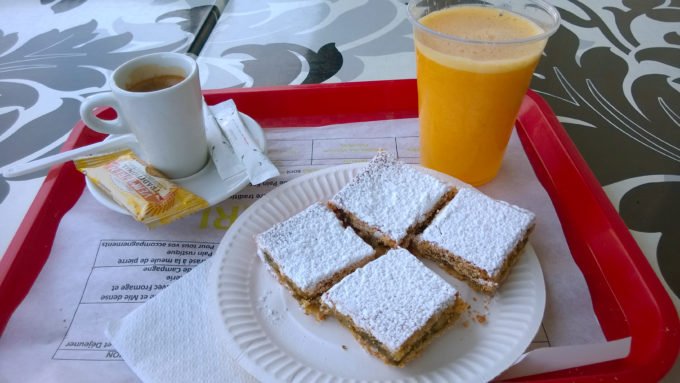
The Sweet Evidence of a City’s Long History

The Sweet Evidence of a City’s Long History
Tourte de Blettes in Nice
I had signed up for a food tour my first morning in Nice and was late to the rendezvous point at Opera Plage. I had skipped breakfast and coffee and was still blinking in the dazzling morning light that comes off the Cote d’Azur, afraid I had missed it. Turned out the few other participants were even later than me.
When we finally rolled out, leaving the brilliant blue water behind us to walk into the old town, it was already 11 am. “But first things first: breakfast!” Gustaf, our Swedish-French guide, flourished a Tupperware from his bag, offering us a mysterious baked item.
My stomach was growling, so I eagerly grabbed the pastry and put it in my mouth where it melted in a sweet, zesty mess, powdered sugar trailing down my peacoat. Only later did Gustaf reveal its contents: Swiss chard, pine nuts, raisins, parmesan, and a pastry dough made with olive oil. The name: tourte de blettes.
In this arid land, Swiss chard has always grown easily and has probably been used in cooking since ancient times. Here, people couldn’t raise cows due to a lack of grass, so there are none of the rich creams or butter of much classic French cuisine; thus the olive oil.
These factors, as well as the many different cultures that passed through over the centuries, created brilliant concoctions such as—along with the Swiss chard tart—socca, a chickpea flat bread, and the pissaladière, a caramelized onion and anchovy tart. Simpler foods based on vegetables, olive oil, and legumes from a Provence that is pretty wild compared to the culinary hauteur of Paris. In keeping with its distinct food, Nice has its own language (Niçard) and its own anthem, which sounds like a ballad of the sun and sea.
I returned to Multari, the café/bakery that specializes in both the sweet and savory versions of the tourte de blettes, and bought several more to take home to freeze. On my last morning, I ate a whole one washed down with a café crème and fresh-squeezed orange juice, sitting outside, consuming delicious evidence of the crossroad city’s rich history.